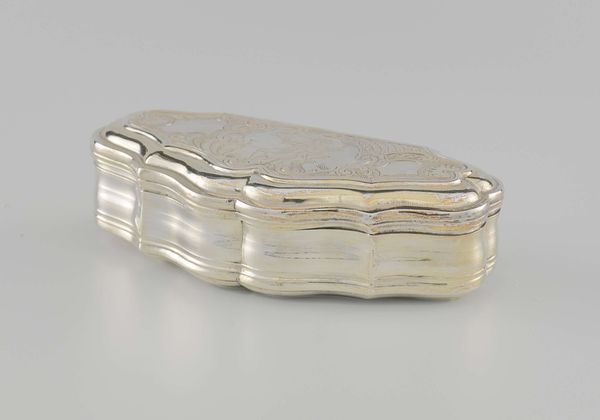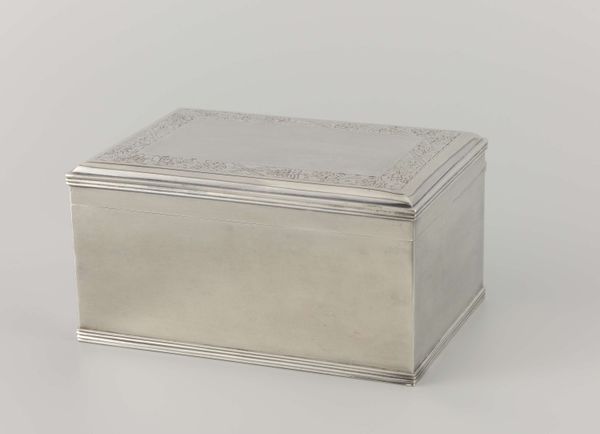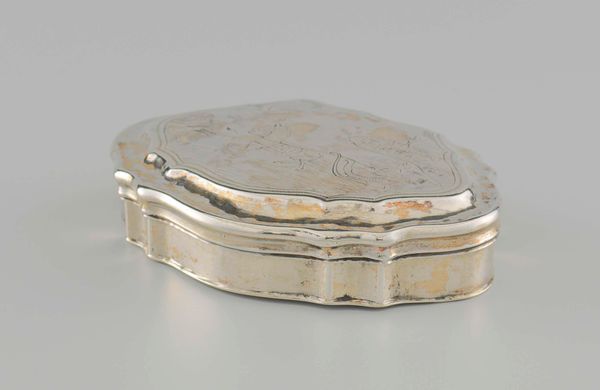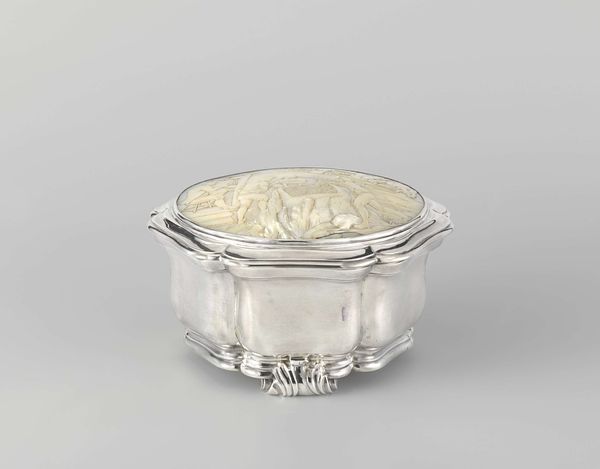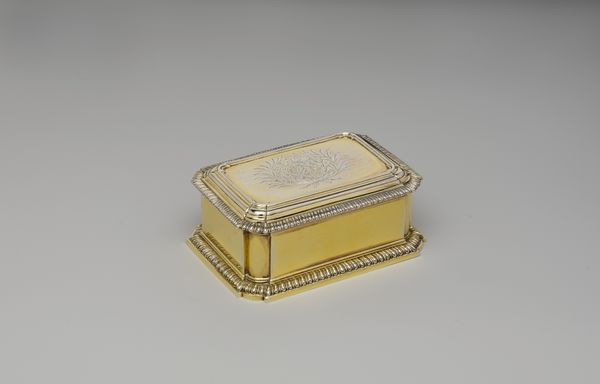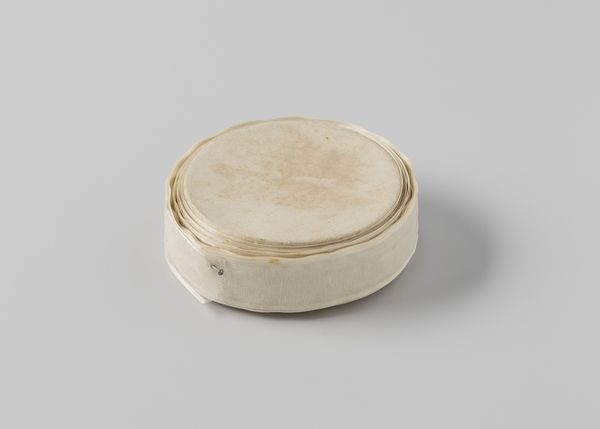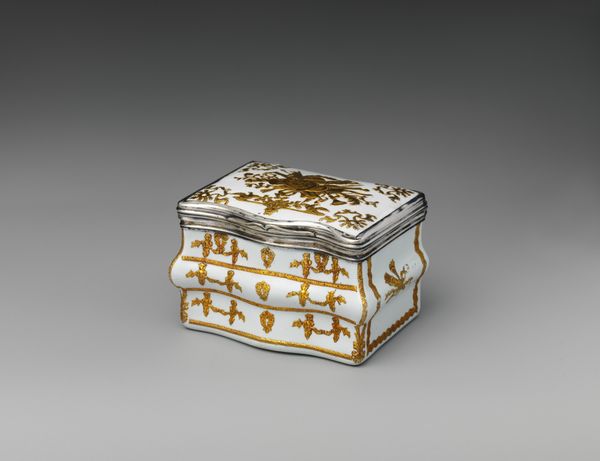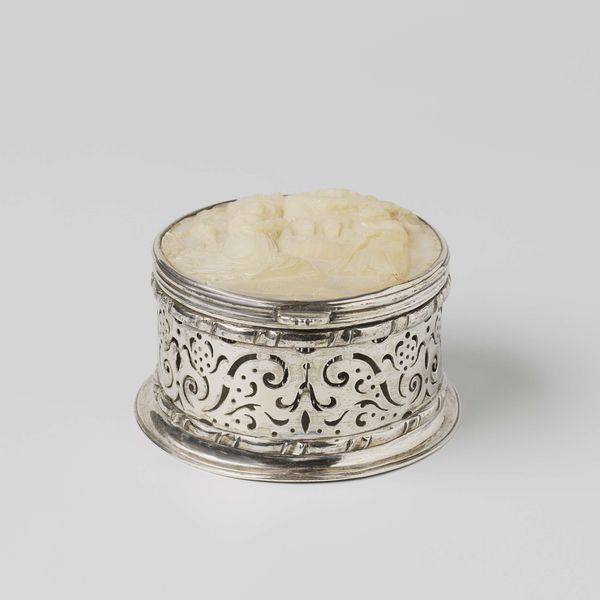
Rechthoekige tabaksdoos van zilver met deksel waarin een plaque van parelmoer met voorstelling Jesaja 45:22. 1750
0:00
0:00
carving, silver, metal
#
carving
#
silver
#
baroque
#
metal
#
decorative-art
Dimensions: height 7.2 cm, length 15.0 cm, width 12.5 cm
Copyright: Rijks Museum: Open Domain
Curator: Immediately, I notice a delicate balance between the sharp geometric form and that soft, pearlescent carving on the lid. Editor: Indeed. The Rijksmuseum holds this object, described as a rectangular silver tobacco box crafted around 1750 by Peter Schemkes. The lid features a plaque made of mother-of-pearl, illustrating a scene derived from Isaiah 45:22. Curator: Schemkes' work displays a strong Baroque influence, seen primarily in the exuberant detail of the carved scene. Consider the complex interplay of figures within such a confined space, and its contrast against the box's overall symmetry. Editor: Given its devotional nature and use of precious materials, such an item would likely have signified both social status and religious conviction. A personal object like this transcends mere utility, operating as a statement of faith intended for display amongst one's peers. Curator: I agree. The formal aspects speak to the intersection of the sacred and secular—note the angular precision offset by the gentle undulation of the lid's surface. It begs the viewer to trace its edges, to explore light and shadow along its ridged sides. Editor: Examining this in context, consider the proliferation of portable devotional items in the 18th century, born from heightened personal piety and expanding trade networks, that granted access to precious goods that reflected faith through ornamentation. Curator: Yes, but I wonder about the selection of pearl for the carving itself. It diffuses light so interestingly, blurring the figures almost as if they’re emerging from mist—quite appropriate, given its intended meaning and baroque styling. Editor: A good point! Such artistic considerations add another dimension. Hopefully, the experience gives people insight into not only baroque artwork of the time but its complex function within social structures. Curator: Absolutely, seeing beyond historical purpose unlocks another aesthetic reading, perhaps appreciating the craftsmanship itself beyond the cultural importance of such precious commodities.
Comments
No comments
Be the first to comment and join the conversation on the ultimate creative platform.
